Newsletter – October 2018
PRESIDENT’S COLUMN
Geography and Climate Change in the 21st Century: Keeping our Eyes on the Prize
By Sheryl Luzzadder-Beach
 “Geography has many grand challenges for the 21st Century… Another grand challenge is ensuring a harassment-, bullying-, and bias-free Geography workplace, to ensure that progress continues on our other grand challenges. This is a “climate change” that we must unite around. This is not an easy topic to write about, but it is my civic and professional duty.”
“Geography has many grand challenges for the 21st Century… Another grand challenge is ensuring a harassment-, bullying-, and bias-free Geography workplace, to ensure that progress continues on our other grand challenges. This is a “climate change” that we must unite around. This is not an easy topic to write about, but it is my civic and professional duty.”
ANNUAL MEETING
Themes Announced for 2019 AAG Annual Meeting

Two themes have been selected for the Washington, D.C. annual meeting: Geography, GIScience, and Health: Building an International Geospatial Health Research Network (IGHRN) and Geographies of Human Rights: The Right to Benefit from Scientific Progress. Both themes will be soliciting papers, panels, posters, and sessions which integrate the theme topic. The AAG identifies themes to help give each annual meeting a more specific focus, though any geography related topic is welcome for presentation.
Learn more about the meeting themes.
Get Involved with the AAG Jobs and Careers Center!
The AAG seeks panelists, mentors, and workshop leaders for careers and professional development events for the AAG Annual Meeting. If interested, email careers [at] aag [dot] org, specifying topic(s) and activity(s) of interest, and attach a current C.V. or resume. For best consideration, please submit your information by October 25, 2018.

“Focus on Washington, DC and the Mid Atlantic” is an ongoing series curated by the Local Arrangements Committee to provide insight on and understanding of the geographies of Washington, DC and the greater Mid Atlantic region in preparation for the 2019 AAG Annual Meeting.
The Resilient Streams in the Urban Landscape of Washington
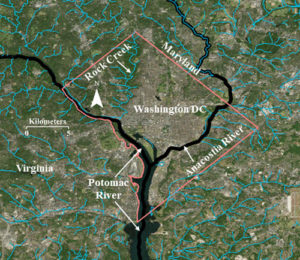 There are numerous tales of how urbanization takes its toll on waterways that stretch through areas growing in population. Ranbir Kang describes the hydrologic system in the nation’s capital in this month’s Focus on Washington, DC and the Mid-Atlantic with special attention to Rock Creek and its small branch, Klingle Creek.
There are numerous tales of how urbanization takes its toll on waterways that stretch through areas growing in population. Ranbir Kang describes the hydrologic system in the nation’s capital in this month’s Focus on Washington, DC and the Mid-Atlantic with special attention to Rock Creek and its small branch, Klingle Creek.
Registration for #aagDC Now Open! Start Planning your Trip!
Deadlines are approaching for submitting a paper abstract. Paper abstract submissions are due October 25, 2018 while poster abstract submissions are due January 31, 2019.
- Register to attend the 2019 AAG Annual Meeting in Washington, DC
- Submit an abstract for a poster or paper presentation
- Book your hotel room in one of two hotels with an AAG attendee discounted rate
- Find out how to travel from the airport or Amtrak station using DC public transit
- Suggest potential workshops or field trips by submitting a proposal
ASSOCIATION NEWS
Meet the Editors of AAG Journals: James McCarthy and Ling Bian
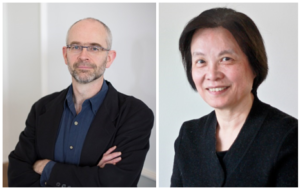 The final two editors we will be featuring in our Meet the Editors section for this year are James McCarthy and Ling Bian. Both work as editors for the Annals of the American Association of Geographers – McCarthy as the Nature and Society editor and Bian as the Geographic Methods editor. Each brings extensive research and editorial experience to the journal.
The final two editors we will be featuring in our Meet the Editors section for this year are James McCarthy and Ling Bian. Both work as editors for the Annals of the American Association of Geographers – McCarthy as the Nature and Society editor and Bian as the Geographic Methods editor. Each brings extensive research and editorial experience to the journal.
Find out more about the AAG Journals editors.
Michelle Kinzer Joins AAG Staff as Government Relations Manager
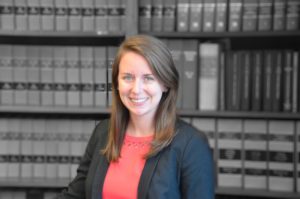 The AAG is pleased to welcome Michelle Kinzer to fill the role of Government Relations Manager. She will serve as AAG’s primary advocate on public policy in Washington and will continue to grow relationships with government decision makers as well as outside organizations and stakeholders. She will track and analyze relevant issues facing the AAG and work to promote the rapidly growing geography community as a whole.
The AAG is pleased to welcome Michelle Kinzer to fill the role of Government Relations Manager. She will serve as AAG’s primary advocate on public policy in Washington and will continue to grow relationships with government decision makers as well as outside organizations and stakeholders. She will track and analyze relevant issues facing the AAG and work to promote the rapidly growing geography community as a whole.
AAG Welcomes Fall Interns
 Three new interns have started working at the AAG for the fall 2018 semester. Meet Daliha Jimenez from the University of Maryland, College Park, Mike Kelly from the George Washington University, and Siri Knudsen from the George Washington University. All three interns will be helping with AAG programs and projects such as education, outreach, research, website, publications, or the Annual Meeting.
Three new interns have started working at the AAG for the fall 2018 semester. Meet Daliha Jimenez from the University of Maryland, College Park, Mike Kelly from the George Washington University, and Siri Knudsen from the George Washington University. All three interns will be helping with AAG programs and projects such as education, outreach, research, website, publications, or the Annual Meeting.
POLICY UPDATE
Geospatial Data Act Passes within FAA
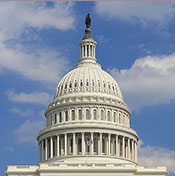 The AAG is pleased to announce that the Geospatial Data Act (GDA) has been passed today, absent damaging exclusionary procurement provisions that were previously in the bill. AAG has been monitoring and providing expertise regarding the GDA for several years at the request of Congressional members.
The AAG is pleased to announce that the Geospatial Data Act (GDA) has been passed today, absent damaging exclusionary procurement provisions that were previously in the bill. AAG has been monitoring and providing expertise regarding the GDA for several years at the request of Congressional members.
Read more about this legislation.
RESOURCES AND OPPORTUNITIES
Geography Education Research Track – Call for Participation
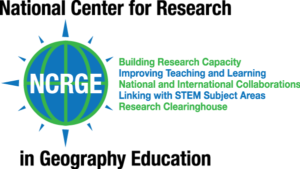 For the 2019 AAG Annual Meeting in Washington, DC, the National Center for Research in Geography Education (NCRGE) is welcoming abstracts and organized session proposals for a track of research-oriented sessions in geography education. This track aims to raise the visibility of research in geography education, grow the NCRGE research coordination network, and provide productive spaces for discussion about geography education research and the notion of what makes research in the field potentially transformative.
For the 2019 AAG Annual Meeting in Washington, DC, the National Center for Research in Geography Education (NCRGE) is welcoming abstracts and organized session proposals for a track of research-oriented sessions in geography education. This track aims to raise the visibility of research in geography education, grow the NCRGE research coordination network, and provide productive spaces for discussion about geography education research and the notion of what makes research in the field potentially transformative.
Rare Book School: The Art & Science of Cartography, 200–1550
 The Library of Congress is offering a short cartography course taught by John Hessler, Specialist in Modern Cartography and Geographic Information Science and Curator of the Jay I. Kislak Collection of the Archaeology of the Early Americas at the Library of Congress. The course will be offered from December 2-7, 2018 in Washington, DC.
The Library of Congress is offering a short cartography course taught by John Hessler, Specialist in Modern Cartography and Geographic Information Science and Curator of the Jay I. Kislak Collection of the Archaeology of the Early Americas at the Library of Congress. The course will be offered from December 2-7, 2018 in Washington, DC.
Learn more about this short class.
National Humanities Center Fellowships Accepting Applications
Up to 40 fellowships are being offered through the National Humanities Center which will run from September 2019 to May 2020. The international center welcomes professionals and scholars from any discipline who are engaged with humanitistic projects to apply by October 17, 2018.
Apply to be a National Humanities Center Fellow.
MEMBER NEWS
Profiles of Professional Geographers
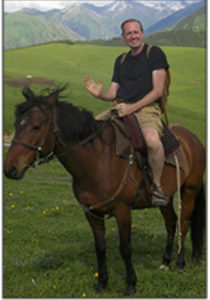 Jeremy Tasch has had a varied geographical career. Now a professor of geography at Towson University, Tasch began his career right out of his undergraduate geography program in the Geography Field Division of the US Census Bureau. After working across the globe, Jeremy asserts that “if a geographer is curious and analytical in applying their knowledge to real-world problem solving effectively, then career opportunities are excellent.”
Jeremy Tasch has had a varied geographical career. Now a professor of geography at Towson University, Tasch began his career right out of his undergraduate geography program in the Geography Field Division of the US Census Bureau. After working across the globe, Jeremy asserts that “if a geographer is curious and analytical in applying their knowledge to real-world problem solving effectively, then career opportunities are excellent.”
Learn more about geography careers.
October Member Updates
Read the latest news about AAG Members.
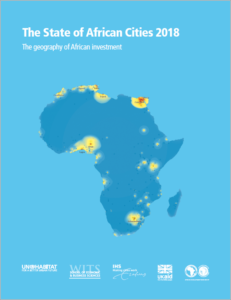 Ronald Wall, economic geographer and professor at the University of the Witwatersrand, Johannesburg, South Africa, has been serving as the lead researcher and author of the UN Report ‘State of African Cities 2018: the geography of African investment’. The report is now available for download. Read the report.
Ronald Wall, economic geographer and professor at the University of the Witwatersrand, Johannesburg, South Africa, has been serving as the lead researcher and author of the UN Report ‘State of African Cities 2018: the geography of African investment’. The report is now available for download. Read the report.
IN MEMORIAM
Terrence W. Haverluk
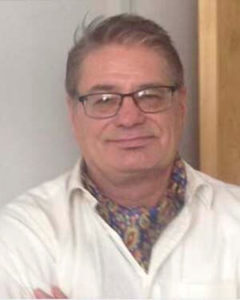 Terrence W. Haverluk passed away on September 18, 2018. A Professor in the Geospatial Science Program at the United States Air Force Academy, Terry received his MA and PhD in geography from the University of Minnesota. Trained as a cultural geographer, most recently his research looked at geopolitics, publishing the textbook Geopolitics From the Ground Up.
Terrence W. Haverluk passed away on September 18, 2018. A Professor in the Geospatial Science Program at the United States Air Force Academy, Terry received his MA and PhD in geography from the University of Minnesota. Trained as a cultural geographer, most recently his research looked at geopolitics, publishing the textbook Geopolitics From the Ground Up.
Arleigh H. Laycock
The AAG is sad to hear of the passing of Dr. Arleigh H. Laycock on June 7, 2018. Laycock was a Professor Emeritus of Geography at the University of Alberta where he had been a professor prior to his retirement in 1989. During World War II, he served as a pilot in the R.C.A.F., following which he obtained a bachelors in Geography from University of Toronto and a PhD in Geography from University of Minnesota.
David Lowenthal

David Lowenthal died peacefully in his home in London on September 15, 2018. Lowenthal was well respected in the disciplines of history, geography, and heritage studies and he had been an emeritus professor of geography at University College, London since 1985. His most recent work, The Past is a Foreign Country – Revisited, published in 2015, was featured at an author meets critics session at the 2016 AAG Annual Meeting in San Francisco.
Joseph E. Schwartzberg
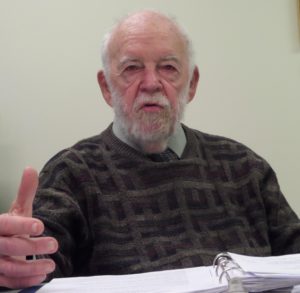 The AAG morns the loss of Joe Schwartzberg who passed away on September 19, 2018. A world citizen of White Bear Lake, Schwartzberg spent the majority of his career working with the World Federalist movement and studying India. In his own words, Joe reflects on his life.
The AAG morns the loss of Joe Schwartzberg who passed away on September 19, 2018. A world citizen of White Bear Lake, Schwartzberg spent the majority of his career working with the World Federalist movement and studying India. In his own words, Joe reflects on his life.
Read Joe’s Kaleidoscopic sketch.
PUBLICATIONS
August 2018 Issue of the ‘Professional Geographer’ Published
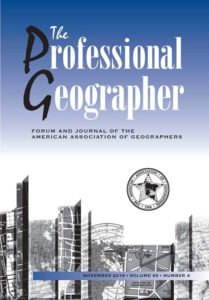
The August 2018 (Volume 70, Issue 3) issue of The Professional Geographer is now available online! The focus of this journal is on short articles in academic or applied geography, emphasizing empirical studies and methodologies. These features may range in content and approach from rigorously analytic to broadly philosophical or prescriptive.
New Books in Geography — August 2018 Available

From Particles in the Air to Transitions of Power, read the latest list of new books in geography! Recently released books are compiled from various publishers each month. Some of these titles are later reviewed in the AAG Review of Books.
Read the September 2018 Issue of the ‘Annals of the AAG’
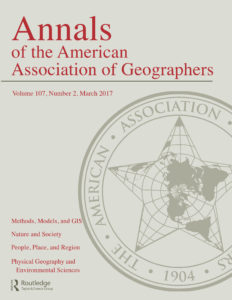
Volume 108, Issue 5 of the Annals of the American Association of Geographers is now available! Articles spanning the breadth of geography from the four major areas of Methods, Models, and Geographic Information Science; Nature and Society; People, Place, and Region; and Physical Geography and Environmental Sciences are featured in each issue. Access to the journal is included in your AAG membership.
Full article listing available.
GEOGRAPHERS IN THE NEWS
EVENTS CALENDAR
- October 12-13, 2018 – New England St. Lawrence Valley Regional Division Fall Meeting
- October 18-19, 2018 – East Lakes Regional Division Fall Meeting
- October 23-26, 2018 – Race, Ethnicity and Place 9th Bi-annual Conference (REP IX)
- October 26-27, 2018 – Middle States Regional Division Fall Meeting
- October 26-28, 2018 – Pacific Coast Regional Division Fall Meeting
- October 31-November 2, 2018 – 41st Annual Meeting of the Applied Geography Conferences
- November 1-3, 2018 – West Lakes Regional Division Fall Meeting
- November 1-4, 2018 – 2018 Powerful Geography Conference
- November 2-3, 2018 – Middle Atlantic Regional Division Fall Meeting
Submit News to the AAG Newsletter. To share your news, email us!
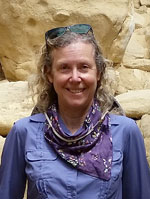 Geography has many grand challenges for the 21st Century: combatting climate change and biodiversity loss; providing clean water; investigating safe refuge, health care, education, and poverty; preparing for natural hazards, and ensuring food security among many. Another grand challenge is ensuring a harassment-, bullying-, and bias-free Geography workplace, to ensure that progress continues on our other grand challenges. This is a “climate change” that we must unite around. This is not an easy topic to write about, but it is my civic and professional duty.
Geography has many grand challenges for the 21st Century: combatting climate change and biodiversity loss; providing clean water; investigating safe refuge, health care, education, and poverty; preparing for natural hazards, and ensuring food security among many. Another grand challenge is ensuring a harassment-, bullying-, and bias-free Geography workplace, to ensure that progress continues on our other grand challenges. This is a “climate change” that we must unite around. This is not an easy topic to write about, but it is my civic and professional duty.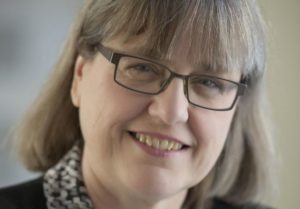
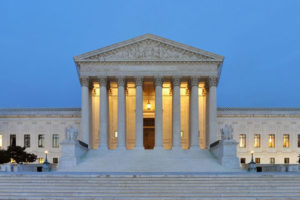
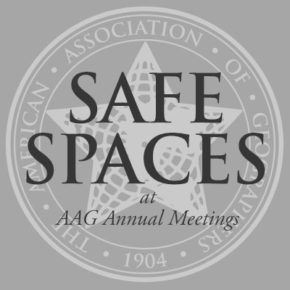 As I wrote in my September 2018 column, the AAG Council appointed a committee to work on improving and strengthening our AAG Meeting Conduct policies, to make our Annual Meeting a safer place. The AAG Inclusion Committee will be presenting their findings and recommendations to AAG Council to consider this fall, so we can move forward with a new plan. I am grateful to the committee, led by Dr. Lorraine Dowler, for their hard work on this. Stepwise, there are other ways we can address the issue of harassment, bullying, and bias in our community and institutions. One of the informal observations by the Inclusion Committee was that science organizations seem to be ahead of the issues in several senses. For the rest of this column, I will share some of the best practices of other organizations, and set an agenda for where we may ask the AAG Council and our membership to go next.
As I wrote in my September 2018 column, the AAG Council appointed a committee to work on improving and strengthening our AAG Meeting Conduct policies, to make our Annual Meeting a safer place. The AAG Inclusion Committee will be presenting their findings and recommendations to AAG Council to consider this fall, so we can move forward with a new plan. I am grateful to the committee, led by Dr. Lorraine Dowler, for their hard work on this. Stepwise, there are other ways we can address the issue of harassment, bullying, and bias in our community and institutions. One of the informal observations by the Inclusion Committee was that science organizations seem to be ahead of the issues in several senses. For the rest of this column, I will share some of the best practices of other organizations, and set an agenda for where we may ask the AAG Council and our membership to go next.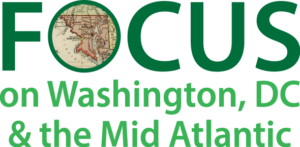 The process of urbanization often leads to the alteration of local streams. Such alterations range from complete disappearance of streams by making them flow underground, converting them into canals, loss of their aquatic habitat, and changes in their morphology (Kang and Marston 2006; Kang 2007) . In Washington, D.C. many streams and springs have disappeared during the last 200 years of urban development and federal growth (Williams 1977) . The two rivers bordering the city, the Potomac and Anacostia rivers, and the National Mall within the city, look very different as compared to their respective landscape characteristics in the 1700s due to changing sediment and runoff volumes. In Figure 1 you can see that the current stream density within the city and the surrounding areas reveals a significant difference (Figure 1). However, some times the local conditions of streams are resilient enough to counter the effects of the urban runoff (Kang 2007; Kang and Marston 2006).
The process of urbanization often leads to the alteration of local streams. Such alterations range from complete disappearance of streams by making them flow underground, converting them into canals, loss of their aquatic habitat, and changes in their morphology (Kang and Marston 2006; Kang 2007) . In Washington, D.C. many streams and springs have disappeared during the last 200 years of urban development and federal growth (Williams 1977) . The two rivers bordering the city, the Potomac and Anacostia rivers, and the National Mall within the city, look very different as compared to their respective landscape characteristics in the 1700s due to changing sediment and runoff volumes. In Figure 1 you can see that the current stream density within the city and the surrounding areas reveals a significant difference (Figure 1). However, some times the local conditions of streams are resilient enough to counter the effects of the urban runoff (Kang 2007; Kang and Marston 2006).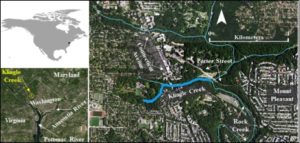
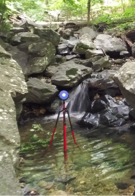
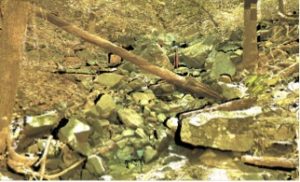
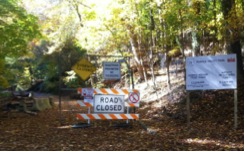
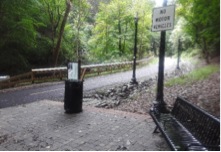
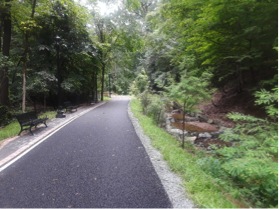
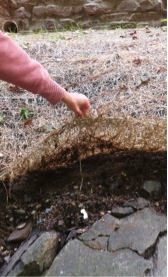
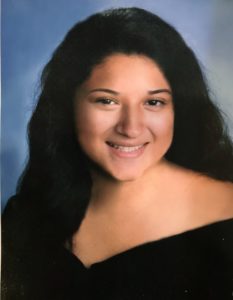 Three new interns have joined the AAG staff this fall semester! The AAG would like to welcome Daliha, Mike, and Siri to the organization.
Three new interns have joined the AAG staff this fall semester! The AAG would like to welcome Daliha, Mike, and Siri to the organization.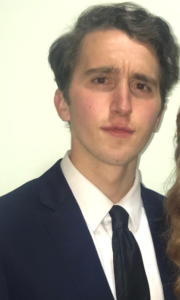 Mike Kelly is currently a junior at the George Washington University studying Geography and Finance. Prior to joining AAG, Mike served as a Membership and Marketing Intern at the Council on Foundations in Arlington, VA. At the COF, he was heavily involved with database management and creating content to be distributed on social media and mailing lists. Born and raised in the suburbs of Philadelphia, Mike spent most of his childhood in Bucks County rooting for the Eagles, Sixers, and Phillies. In his spare time, Mike enjoys producing and listening to music, running, following college basketball and reading up on the latest trends in new urbanism.
Mike Kelly is currently a junior at the George Washington University studying Geography and Finance. Prior to joining AAG, Mike served as a Membership and Marketing Intern at the Council on Foundations in Arlington, VA. At the COF, he was heavily involved with database management and creating content to be distributed on social media and mailing lists. Born and raised in the suburbs of Philadelphia, Mike spent most of his childhood in Bucks County rooting for the Eagles, Sixers, and Phillies. In his spare time, Mike enjoys producing and listening to music, running, following college basketball and reading up on the latest trends in new urbanism.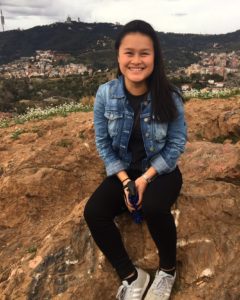 Siri Knudsen is a senior at the George Washington University pursuing a B.A in Geography and International Affairs and minors in Spanish and GIS. Over the summer she worked at the Port of Seattle in Washington State as a data management intern in their environmental department. Siri got to participate in many of their habitat restoration projects including monitoring and mapping kelp growth in Elliott Bay. Aside from her interest in environmental issues, she is an active participant in open source mapping and hope to one day bridge her disciplines and continue working in this field. Siri’s love for geography came from childhood boating trips in British Columbia where her family explored the intricate groups of islands, navigating them using nautical charts. In her spare time, Siri likes to read, travel, ski, and be at the beach with her dog!
Siri Knudsen is a senior at the George Washington University pursuing a B.A in Geography and International Affairs and minors in Spanish and GIS. Over the summer she worked at the Port of Seattle in Washington State as a data management intern in their environmental department. Siri got to participate in many of their habitat restoration projects including monitoring and mapping kelp growth in Elliott Bay. Aside from her interest in environmental issues, she is an active participant in open source mapping and hope to one day bridge her disciplines and continue working in this field. Siri’s love for geography came from childhood boating trips in British Columbia where her family explored the intricate groups of islands, navigating them using nautical charts. In her spare time, Siri likes to read, travel, ski, and be at the beach with her dog!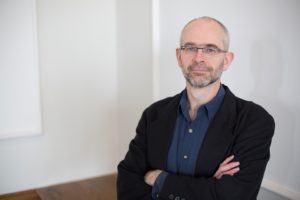 James McCarthy is the Nature and Society editor for the Annals of the American Association of Geographers and a Professor in the Graduate School of Geography at Clark University. His work analyzes the interactions of political economy and environmental politics, with particular emphases on rural areas, renewable energy, property relations, and social movements. He has published widely on these themes in geography and related disciplines, including two major edited volumes and over 50 articles and chapters. He has carried out research on natural resource management, energy policy, and connections between rural landscapes and livelihoods for the Ford Foundation and Oxfam America. Prior to coming to Clark in 2011, he was an Assistant and Associate Professor of Geography at Penn State University. His current research focuses on the relationships among climate change, renewable energy, and the political economy of capitalism, focusing in particular on the ways in which a renewable energy sector booming in the context of climate change is taking up land and other natural resources in ways that may slow further climate change on the one hand, but create new social and environmental claims, impacts, and conflicts on the other.
James McCarthy is the Nature and Society editor for the Annals of the American Association of Geographers and a Professor in the Graduate School of Geography at Clark University. His work analyzes the interactions of political economy and environmental politics, with particular emphases on rural areas, renewable energy, property relations, and social movements. He has published widely on these themes in geography and related disciplines, including two major edited volumes and over 50 articles and chapters. He has carried out research on natural resource management, energy policy, and connections between rural landscapes and livelihoods for the Ford Foundation and Oxfam America. Prior to coming to Clark in 2011, he was an Assistant and Associate Professor of Geography at Penn State University. His current research focuses on the relationships among climate change, renewable energy, and the political economy of capitalism, focusing in particular on the ways in which a renewable energy sector booming in the context of climate change is taking up land and other natural resources in ways that may slow further climate change on the one hand, but create new social and environmental claims, impacts, and conflicts on the other.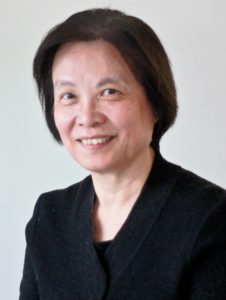
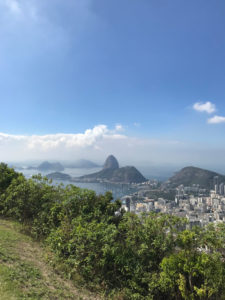 This Labor Day weekend marks the return to University instruction for many geography faculty and students, and as an educator, I welcome you all back to our academic community and wish you a successful new academic year. Many of us are returning from field and lab research, writing, and conferences, wondering where the summer went and why we are considered nine-month-employees! … For our non-academic professional Geography community, I pause to thank you for your research partnerships, your innovation and entrepreneurship, and for the internship opportunities and inspiration you offer to our students.
This Labor Day weekend marks the return to University instruction for many geography faculty and students, and as an educator, I welcome you all back to our academic community and wish you a successful new academic year. Many of us are returning from field and lab research, writing, and conferences, wondering where the summer went and why we are considered nine-month-employees! … For our non-academic professional Geography community, I pause to thank you for your research partnerships, your innovation and entrepreneurship, and for the internship opportunities and inspiration you offer to our students.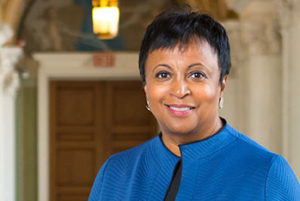 The AAG will be awarding Carla Hayden, 14th Librarian of Congress, the Atlas Award during the 2019 AAG Annual Meeting, on Friday, April 5, 2019. Hayden will deliver a keynote address after presentation of the Atlas Award, the association’s highest honor.
The AAG will be awarding Carla Hayden, 14th Librarian of Congress, the Atlas Award during the 2019 AAG Annual Meeting, on Friday, April 5, 2019. Hayden will deliver a keynote address after presentation of the Atlas Award, the association’s highest honor.
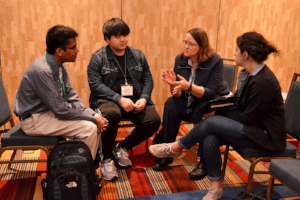 The AAG seeks panelists, mentors, and workshop leaders for careers and professional development events for its annual meeting, April 3–7, 2019, in Washington, DC. Individuals representing a broad range of employment sectors, organizations, academic and professional backgrounds, and racial/ethnic/gender perspectives are encouraged to apply. If interested, email
The AAG seeks panelists, mentors, and workshop leaders for careers and professional development events for its annual meeting, April 3–7, 2019, in Washington, DC. Individuals representing a broad range of employment sectors, organizations, academic and professional backgrounds, and racial/ethnic/gender perspectives are encouraged to apply. If interested, email  This month, get to know the editorial team of AAG’s newest journal, GeoHumanities. Two editors, Tim Cresswell and Deborah Dixon, and one assistant editor, Philip J. Nicholson, work on the journal, which includes scholarly articles at the intersection of geography and the humanities, shorter creative pieces, and an accompanying
This month, get to know the editorial team of AAG’s newest journal, GeoHumanities. Two editors, Tim Cresswell and Deborah Dixon, and one assistant editor, Philip J. Nicholson, work on the journal, which includes scholarly articles at the intersection of geography and the humanities, shorter creative pieces, and an accompanying 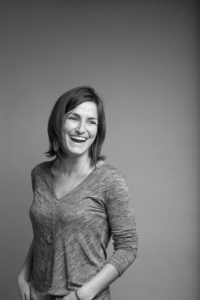 This month, learn about the career path of Caitlin Kontgis who works as an Applied Scientist Lead (Solutions) at Descartes Labs in New Mexico. Kontgis discusses her passion for geography, how it has led to her giving back to her local community, and the undergraduate courses that inspired her eventual professional goals.
This month, learn about the career path of Caitlin Kontgis who works as an Applied Scientist Lead (Solutions) at Descartes Labs in New Mexico. Kontgis discusses her passion for geography, how it has led to her giving back to her local community, and the undergraduate courses that inspired her eventual professional goals.
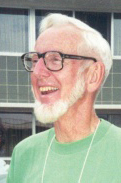 Robert Stoddard passed away on May 21, 2018 at the age of 89. Stoddard, one of the first geographers to focus on pilgrimage, was also an Asia specialist who combined his interests throughout his distinguished teaching career in the U.S. at University of Nebraska-Lincoln and abroad in India, Nepal, and Sri Lanka.
Robert Stoddard passed away on May 21, 2018 at the age of 89. Stoddard, one of the first geographers to focus on pilgrimage, was also an Asia specialist who combined his interests throughout his distinguished teaching career in the U.S. at University of Nebraska-Lincoln and abroad in India, Nepal, and Sri Lanka.